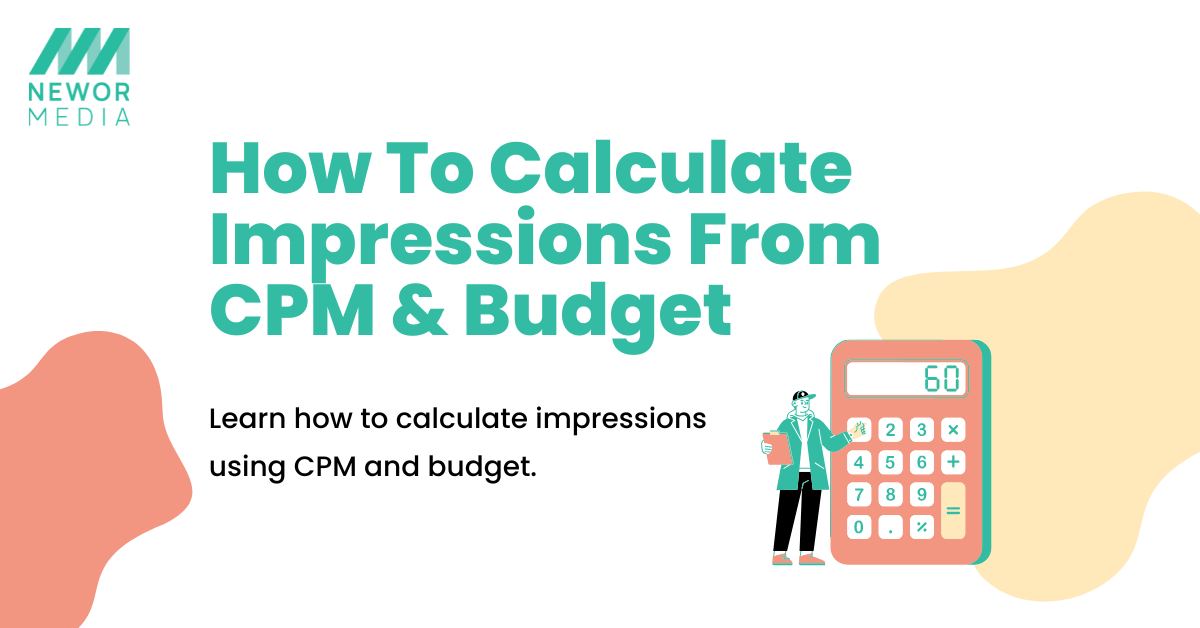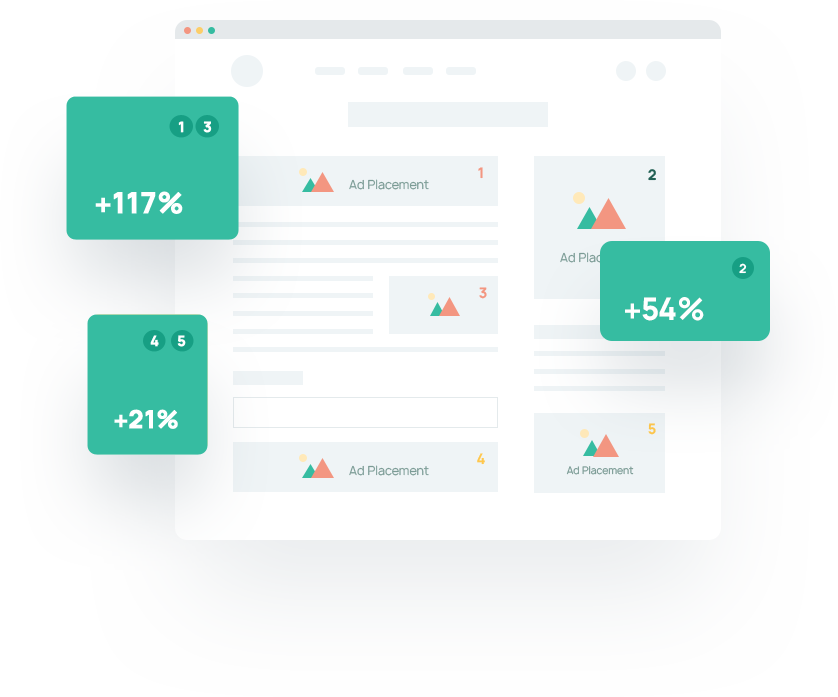CPM. Budget. Impressions. These are the buzzwords thrown around when you’re running any kind of display ad campaign—but if you’re staring at your ad dashboard wondering how they all connect, you’re not alone.
Let’s break this down in a simple, no-jargon way. If you’ve ever asked yourself, “How do I calculate impressions with CPM and cost?”, you’re in the right place. This guide will not only help you crunch the numbers but also help you decide when paying by CPM actually makes sense—and when it might not.
What Is CPM?
CPM is an abbreviation for ‘Cost Per Mille’ which means cost per 1000 impressions. It is a metric used in advertising. If a website or ad network charges $2 CPM, it means the advertiser will pay $2 for every 1,000 times it is shown even if someone clicks or not.
It’s a common pricing model for display ads, social media campaigns, and programmatic advertising. And it’s a great way to get visibility when brand awareness is the goal.
But here’s where people get stuck: You’ve got your CPM, and you know your budget, but how do you figure out how many eyeballs (aka impressions) you’ll actually get?
How to Calculate Impressions from CPM and Budget
The formula to calculate impressions using CPM and budget is fairly simple.
Formula: Impressions = (Budget ÷ CPM) × 1,000
If you have a budget of $500 and the CPM is $5, then by using the formula, the impressions turn out to be 100,000
Impressions = ($500 ÷ $5) × 1,000 = 100,000
This means that a budget of $500 with a $5CPM, an advertiser can get 100,000 impressions.
This equation can be flipped to find out the budget needed to achieve targeted impressions. You just need to plan out the impressions that you want to generate to calculate the budget.
Budget = (Impressions ÷ 1,000) × CPM
While this seems straightforward, it can allow you to plan smarter ad campaigns while maintaining a budget with a realistic expectation.
When Should an Advertiser Use CPM Pricing?
Depending on your campaign goals, your pricing method should be determined. CPM is the most effective ad pricing strategy when your campaign objective is awareness for example, launching a new product, creating brand awareness or a new service campaign.
This is because your aim is to get attention and not clicks. CPM can help you grow your reach quickly if you have strong creatives, and reliable inventory.
However, if your advertising goal is actions like getting visitors to click, sign up, or make a purchase, it is recommended to look at CPC (Cost Per Click) or CPA (Cost Per Acquisition). CPM guarantees visibility, it does not ensure clicks and conversions.
Not All Impressions Are Created Equal
This is where things get tricky. Sure, 100,000 impressions sound great on paper. But if your ads are showing up at 2 a.m. on a random cooking blog no one reads…well, you’re not getting much value.
You want your impressions to be viewable and relevant. That means making sure your ads are shown to the right people, in the right place, at the right time.
Programmatic platforms and ad networks often offer targeting options—by interest, location, device, and even time of day. Use them. Because 50,000 targeted impressions are way more valuable than 200,000 random ones.
Keep a Check on Fraud and Viewability
Unfortunately, not every impression is a real impression. Bots are a thing. Fraud exists. And even on legit sites, your ad could technically “load” on a page but never actually be seen (like if it’s at the bottom of the page and the user never scrolls).
According to industry benchmarks, a “viewable” ad is one where at least 50% of the creative is on screen for one continuous second (for display) or two seconds (for video).
Ensure that your programmatic ad platform provides fraud protection and offers detailed reporting. This will help you to protect your budget. You can even optimize for viewable CPM where you will only be charged for impression that meet viewability standards.
CPM vs CPC: Which is better?
Advertisers might question, “isn’t it better to just pay for the clicks?” and sometimes it is valid too. CPC is good for direct response campaigns, but it has its own drawbacks like higher costs per conversion if the click isn’t leading to a purchase.
The best way to determine your ad pricing strategy is testing it out.
One of the standard methods is running A/B testing on ad campaigns with similar creatives but different pricing strategies. After seeing the results on both these ad pricing strategies, let the data help you finalize the one that meets your goal and is more beneficial.
Examine, Adapt, Repeat
Let’s say you’ve launched a campaign with a $2,000 budget and a $4 CPM. That should give you 500,000 impressions. But halfway through, you notice that most impressions are coming from low-performing placements, and your engagement rate is trash. If you launch an ad campaign with a budget of $2,000 and $4 CPM, it should ideally yield 500,000 impressions. But if you notice that these impressions, come from low-performing placements and the engagement rate is insignificant, it’s your sign to change your campaign tactic.
Adjust your ad targeting, adapt your frequency caps accordingly and swap your ad assets and tweak your bidding strategy. The effectiveness of CPM depends on the campaign behind it. Real-time adjustments help to improve the performance of the campaign.
Don’t just “set it and forget it.” Monitor how your spending translates into impressions and what those impressions are doing for your brand.
Quick Tip: Use a CPM Calculator (Seriously)
If you’re running multiple campaigns with different budgets and CPM rates, keeping track manually can get messy. Use a simple CPM calculator to input your numbers and get instant impressions (or vice versa). There are tons of free ones online, and they’re surprisingly handy for quick planning.
Final Thoughts
Paying by CPM is neither good nor bad—it just depends on your goals. CPM is a great way to increase brand visibility and awareness but only if it is backed by good creative, targeting and timely monitoring.
While planning your next ad campaign, don’t just solely focus on numbers. Instead, use the CPM formula, set your audience and goals and keep an eye on the ad performance.
And remember that an impression is just a glance. It’s what you do with it that really counts.
Need help optimizing your ad strategy? At Newor Media, we work with publishers to get the most out of their ad inventory—without wasting impressions or ad dollars. Let’s talk.

